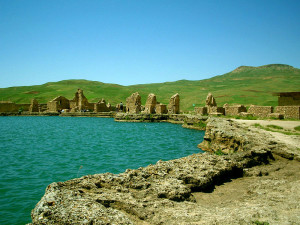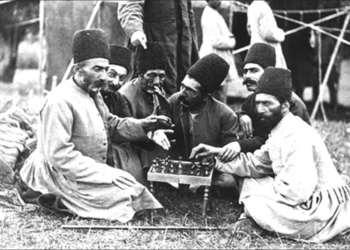August 08, 2014

The ancient citadel known as the Throne of Solomon (Takht-e Soleyman), once a Zoroastrian fire temple, has had a major influence on Islamic architecture over the centuries.
Located in northwestern Iran, the site lies in a broad and remote mountain valley between the cities of Zanjan and Tekab
The site consists of an oval platform about 350 by 550 meters (1,150 by 1,800 feet).
The area was once known as Shiz or Adur Gushnasp, which literally means the “Fire of the Warrior Kings.” But after the Arab conquest, the site was re-named the Throne of Solomon.
Built during the Sassanid Dynasty (224-642 CE), the ruins include a principal Zoroastrian sanctuary and a Sassanid temple dedicated to Anahita, the goddess of water and fertility.
Fire and water have been among the fundamental elements for the Iranian peoples since ancient times. Fire was believed to conceive a divine messenger between the visible world and the invisible (gods) and water was considered as the source of life. There is also a lake fed by springs at the site, which is surrounded by massive stonewalls and 38 towers.
A volcanic conical core mount is also located near the area and is known as Solomon’s Prison (Zendan-e Soleyman).
The 107-meter tall mount has a large crater at the top with a 65-meter (210-foot) span and nearly 80 meters (260 feet) deep.
Centuries ago, the crater was filled with water fed by springs, but, after an earthquake, the lake was drained dry.
The structures were partly restored in the Mongol period (Ilkhanid 1220-1501 CE) in the 13th century. The designs of the fire temple, the palace and the general layout have strongly influenced the development of Islamic architecture.
Archaeological excavations have unveiled traces of an occupation during the Achaemenid (550-334 BCE) period, as well as later Parthian (247 BCE-224 CE) settlements in the citadel.
As an outstanding ensemble of royal architecture, the Throne of Solomon was inscribed on UNESCO’s World Heritage list in 2003.



















